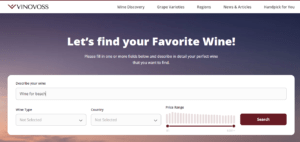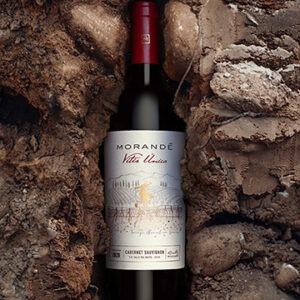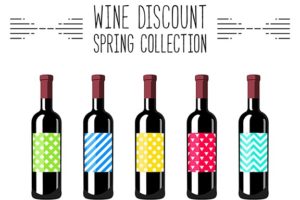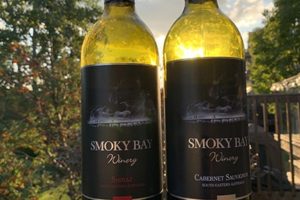
Before machines take over the world, they’re taking the role of sommelier.
Artificial Intelligence is everywhere these days, so it’s no surprise that it has poured into the world of wine.
On the ‘fine wine’ front, where wine fraud is a constant concern, scientists have now created AI algorithms to verify the origin of a bottle’s contents. “This method, reliant on gas chromatography and the analysis of complex compound concentrations, has not only shown a near perfect (99%) success rate in identifying the wine’s estate but also a 50% accuracy in determining the vintage,” notes Forbes magazine. There’s also digital olfaction technology, such as startup Aryballe, which employs AI tools for chemical analysis. “This synergy could result in a handheld device capable of authenticating wine with a simple scan,” Forbes adds. “Such a device, potentially a feature in future smartphones, would not only empower consumers against fraud but also offer a new, objective way to review and appreciate wine.”
As far as wine appreciation goes, there’s currently restaurant software out there such as SommifyAI to make wine selection easier for customers. There are even wineries using AI to make wine! At the annual ProWein extravaganza coming up March 10-12 in Dusseldorf, Germany, a masterclass trade event will enable participants to compare wines from the country of Moldova made by AI with wine made from human beings.
And, of course, there’s new technology for regular folks like us to whittle down the million or so different labels out there to one that fits our personal taste and budget. One of those new sites is BetterAI‘s “VinoVoss” AI Sommelier wine search engine and recommendation system. This Silicon Valley creation is touted as “a leading-edge platform that picks the perfect wine every time, for any occasion courtesy of a highly advanced artificial intelligence assist. The real fun is asking VinoVoss human, conversation-style questions or providing prompts like, ‘What is the best dry wine from Chile to pair with pork?’; ‘I’m looking for a red wine that’s good with grilled salmon for date night’; ‘I’m craving a crisp but fruity rose from Sonoma’; or ‘What Bordeaux do celebrities like that goes with seafood?’”
VinoVoss is now providing users with the most comprehensive selection of wines available on the planet, its literature promises. “The system has numerous capabilities, including allowing users to search for wines by grape variety, region or price; get personalized wines based on taste preferences; compare wines to find a match for a meal; track their own wine collection and create a wish list; search for organic wines and more.”

VinoVoss is among the AI-driven vehicles to match the right wine to your taste. It’s still working out the kinks.
So, of course, I decided to try it. Keeping it simple, I entered “Ontario Cabernet Franc” with a $25 limit. It spewed out numerous recommendations—none of which were actually from Ontario…or even Canada, for that matter.
So I entered “Cabernet Franc,” “under $25” and selected “Canada.”
Pondview Cabernet Franc Rosé was the lone Canadian suggestion. A Cab Franc rosé, but at least we’re in the ballpark. Endeavouring to be even more specific, I entered “Cabernet Franc,” “Canada,” “Red” and “Still Wine” under the various categories.
It can’t possibly screw this one up, I figured.
I figured wrong.
ZERO Canadian options came up. Portugal, Spain, the U.S., etc…but nothing from Canada.
There are obviously a few highly sophisticated technological tweaks to be worked out…like maybe introducing this American creation to the country immediately north of it. But I expect it’s only a matter of time before they perfect this AI-driven platform…or before the machines take over the world, in which case I won’t have much need for an artificial intelligence sommelier anyway.
What we really need is a machine-learning app that includes wines that Ontarians can readily access (either at retail, Ontario wineries or through wine agents). But on this site—for now at least—you’re stuck with me and a human review. Here’s a new release at the LCBO from Chile….made by humans.
 Morandé Vitis Unica Cabernet Sauvignon 2021 — Maipo Valley, Chile ($18)
Morandé Vitis Unica Cabernet Sauvignon 2021 — Maipo Valley, Chile ($18)
This is among the LCBO’s “$18 Solution” wines (it would typically be in the $22 range). Promoted six times per year, these wines are meant to over-deliver at the $18 price point, encouraging customers to try something new. This particular wine is part of Morandé’s Vitis Única portfolio—with traditional varieties from quality vineyards, but using non-conventional winemaking techniques to add complexity, structure and elegance, and to really add a sense of place.
The fruit of this Cabernet comes from selected plots of the San Bernardo vineyard in Chile’s famed Maipo Valley, a hotbed of Bordeaux varieties, particularly Cabernet Sauvignon. The winemaking process begins with a lengthy 32 to 35 days of maceration to extract phenolic compounds from the skins, seeds and stems in order to optimize the colour, flavour and tannin structure. The wine then undergoes 18 months of aging—80% in huge French oak foudres of 2,000 to 4,000 litres (a lower wine-to-oak ratio typically ensures that the fruit doesn’t get overpowered by the oak) and 20% in new barrels of the same wood (adding structure). The resulting wine, Morandé says, is “fresher with greater acidity in relation to its peers.”
The nose is one of forest floor, wild berries, blackcurrants and blackberries, with a sprinkling of cinnamon. In the mouth, it’s medium bodied with very fine tannins. The fruit is dark and earthy. Be careful at what temperature you serve this; even slightly overly chilled and it will close up both on the nose and palate—16-18C should be optimal. The finish was very good, if not great. It’s a quite dry at 3 g/L of sugar. There are no faults to be found, but it feels like a muzzled tenor, a broken wild horse—as though they’ve worked so hard at refining this bold grape that they’ve taken some of the fun out if it.
It says 13.5% alc. on the bottle—and that’s what it smells and tastes like—but note that the LCBO has listed it at 14.2%.
I’ve seen mushroom burgers as an ideal pairing, and that sounds about right—something that won’t overpower this retrained but sophisticated wine. 89




Leave a Reply
Your email is safe with us.